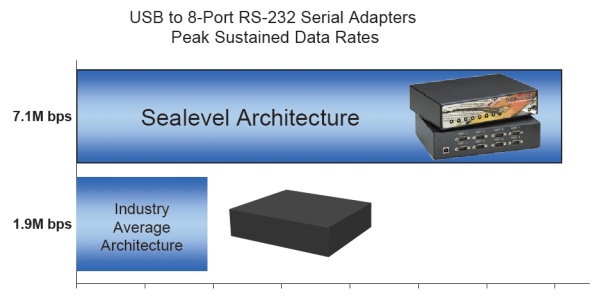Test Report: USB to Serial Adapter Designs
Impact of Architecture on Performance of USB to Serial Adapters
“We were stunned at the performance difference
between brands of multiport USB to serial adapters.”
Design architecture is the critical element.
Findings
There is a significant difference in performance between the “Sealevel architecture” and “industry average architecture” for USB serial adapters. Performance testing of 8-port USB serial adapters proved that the architecture determines the maximum baud rate and more importantly, the throughput of connected serial devices.

The “Sealevel architecture” uses a USB UART interface that delivers significantly faster and more reliable communications.
The “industry average architecture” 8-port USB serial adapter utilizes a USB microcontroller and a single FPGA wired to all eight serial ports. The interface between the microcontroller and FPGA creates a bottleneck because the serial devices are sharing the throughput of the microcontroller. As a result, each additional serial device added substantially reduces the speed of all eight serial ports.
Learn how multiport USB serial architecture affects your applications in our Test Report: Impact of Architecture on Performance of USB to Serial Adapters (pdf) white paper. Download the file below.
All Sealevel USB serial adapters have a dedicated USB UART design. Click on the link to see our full line of USB serial adapters.
Categories:
